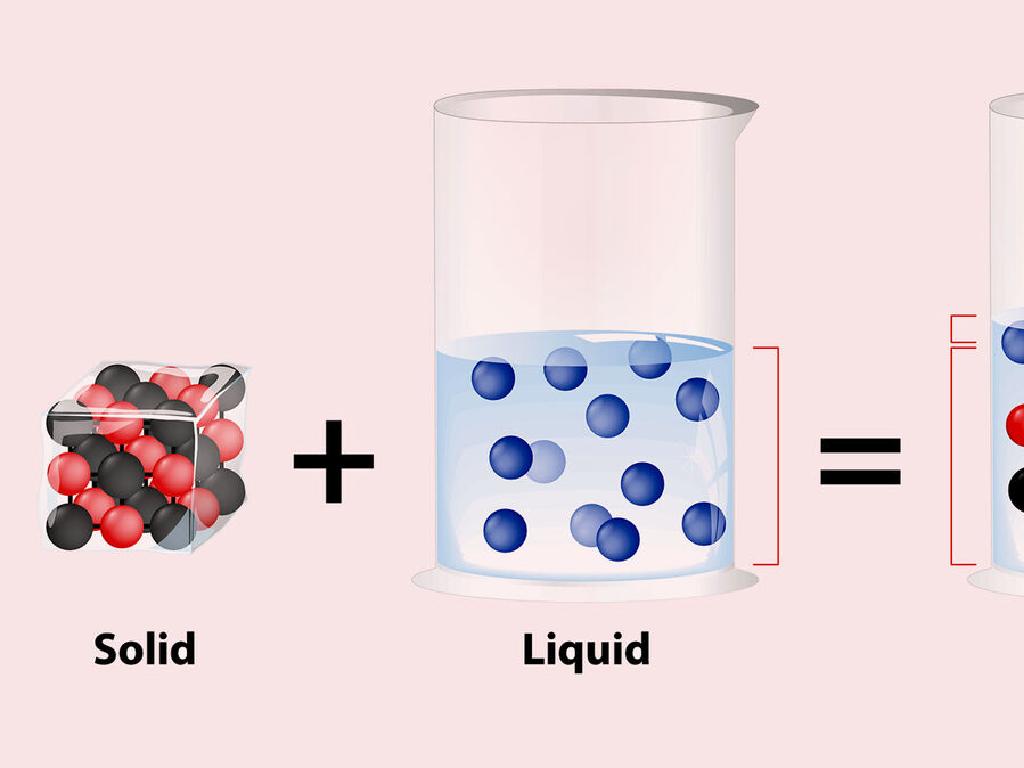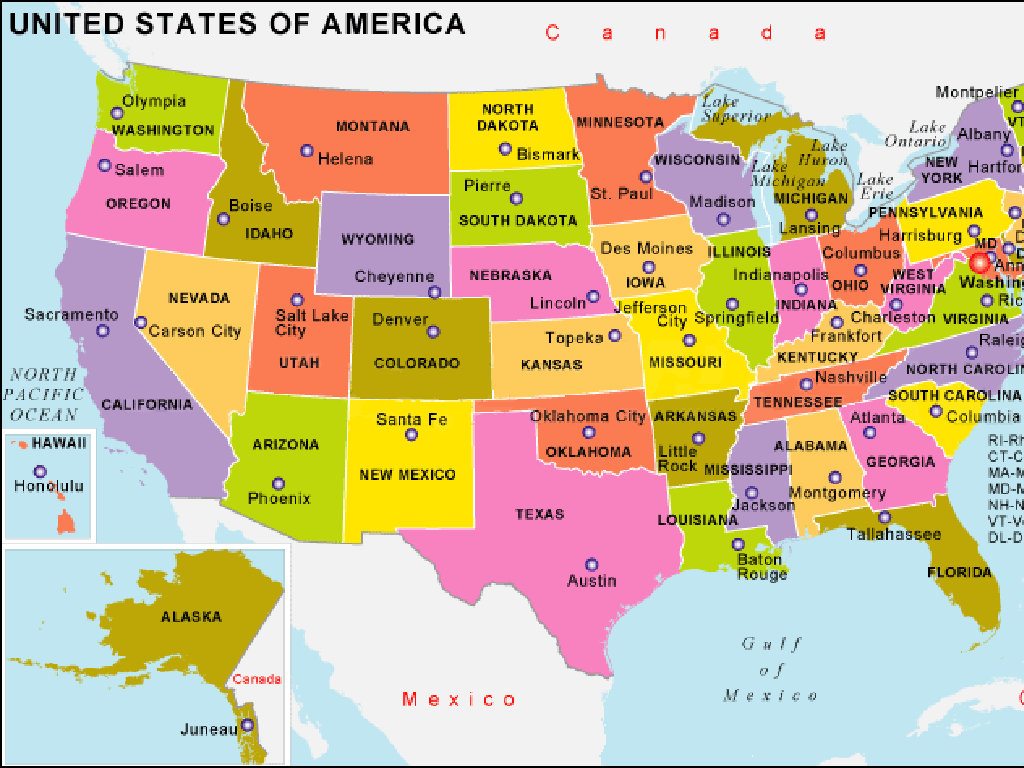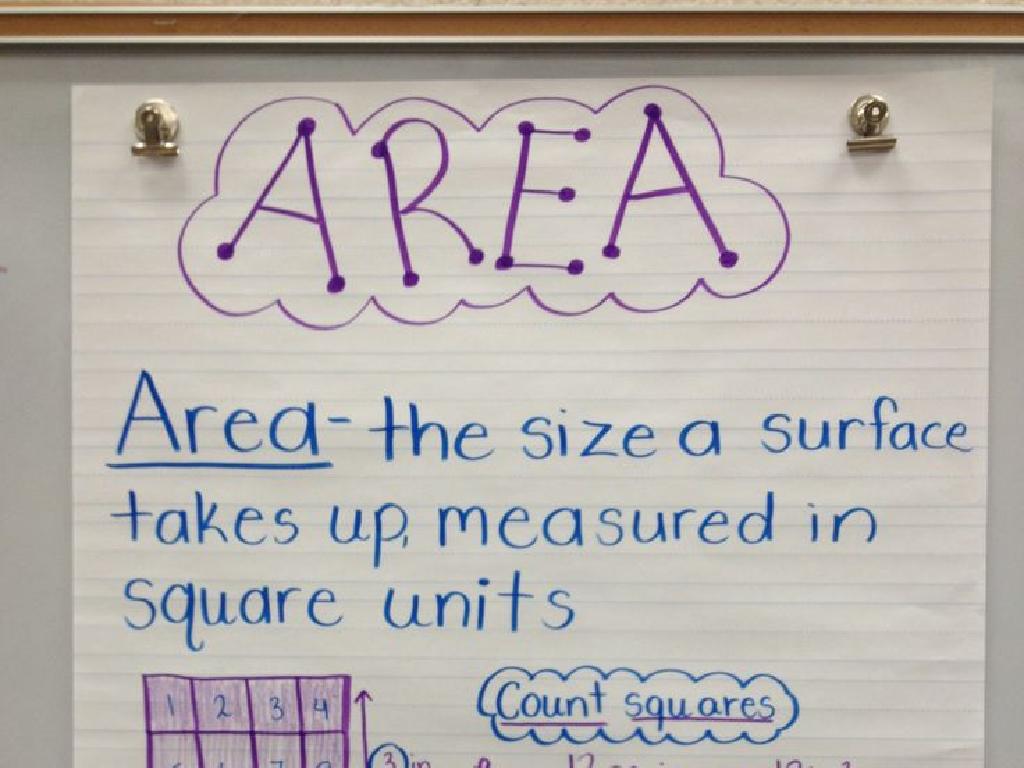Identify Advantages And Disadvantages Of Payment Methods
Subject: Math
Grade: Fifth grade
Topic: Financial Literacy
Please LOG IN to download the presentation. Access is available to registered users only.
View More Content
Financial Literacy: Payment Methods
– What is Financial Literacy?
– Importance of Payment Knowledge
– Knowing how to pay helps us manage money better.
– Advantages of Different Payments
– Some methods are quick and easy, like digital wallets.
– Disadvantages of Different Payments
– Some methods can have fees or be less secure, like cash.
|
This slide introduces the concept of financial literacy with a focus on understanding different payment methods. Financial literacy is the ability to understand and effectively use various financial skills, including personal financial management, budgeting, and investing. It’s crucial for students to learn about different payment methods to make informed decisions about money in the future. Discuss the pros and cons of cash, credit cards, checks, and digital payments, highlighting how each method fits into everyday life. Emphasize the importance of security and the potential costs associated with different payment options. Encourage students to think about which methods their families use and why.
What is Money? Understanding Payment Methods
– Define money and its use
– Money’s evolution through history
– Barter, coins, paper money to digital
– Modern forms of money
– Cash, checks, debit cards, credit cards, online payments
– Pros and cons of each type
– Cash: tangible, Checks: traceable, Debit/Credit Cards: convenient, Online Payments: instant
|
Begin with a simple definition of money as a medium of exchange for goods and services. Discuss the various forms money has taken throughout history, from bartering with goods to the use of coins and paper money, leading up to today’s digital transactions. Introduce the current forms of money, explaining each one: cash is physical money; checks are written orders for banks to pay money; debit cards withdraw directly from a bank account; credit cards borrow money to be paid back later; and online payments are electronic transactions. Highlight the advantages and disadvantages of each form, such as the tangibility of cash, the traceability of checks, the convenience of cards, and the instant nature of online payments. Encourage students to think about why different payment methods might be used in different situations.
Understanding Cash Transactions
– What is cash?
– Cash is physical money like bills and coins.
– Advantages of using cash
– Pay right away, no personal info, no fees.
– Disadvantages of using cash
– Can be lost or stolen, hard for big buys, no track record.
– When to use cash wisely
|
This slide introduces students to the concept of cash as a payment method. Explain that cash is the physical form of money, such as bills and coins, that we use to buy things. Highlight the advantages of using cash, including the immediacy of transactions, the privacy it offers since it doesn’t require sharing personal information, and the absence of additional transaction fees. Discuss the disadvantages, such as the risk of losing cash or having it stolen, the impracticality of carrying large amounts for big purchases, and the lack of an electronic record for tracking spending. Encourage students to think about situations where using cash is a good choice and when it might be better to use another payment method.
Understanding Checks: Pros and Cons
– What is a check?
– A written order to pay a specific amount from your bank account
– Advantages: Safety & Records
– Safer for big payments, leaves a paper trail for tracking
– Disadvantages: Processing Time
– Checks may take days to clear, slowing down transactions
– Risk of Bouncing Checks
– If account balance is low, a check may not clear, incurring fees
|
This slide aims to educate fifth-grade students on the concept of checks as a payment method. Begin by explaining that a check is a paper document that orders a bank to pay a specific amount of money from a person’s account to another individual or company. Highlight the advantages of using checks, such as increased security compared to carrying large amounts of cash and the benefit of having a physical record of payments made. Discuss the disadvantages, including the time it takes for a check to be processed by banks and the potential risk of a check ‘bouncing’ or being rejected due to insufficient funds in the account, which can lead to additional fees. Use relatable examples to help students understand, such as comparing the check to a written promise that needs to be verified by the bank.
Understanding Debit Cards
– Debit card basics
– A card for bank account access
– Advantages: Secure and convenient
– Direct spending helps manage money
– Disadvantages: Overdraft risks
– Fees if you spend more than you have
– Comparing with credit cards
– Debit uses your money, credit borrows
|
This slide aims to educate fifth-grade students on the concept of debit cards as a payment method. Begin by explaining that a debit card is a plastic payment card that allows them to spend the money they have in their bank account, unlike credit cards which let them borrow money to be paid back later. Highlight the advantages of using debit cards, such as the ease of tracking spending and avoiding debt since they’re using money they already have. Discuss the disadvantages, including the possibility of overdraft fees if they spend more than their account balance and the potential for fraudulent activities. Compare debit cards to credit cards to ensure students understand the difference between spending their own money versus borrowing. Encourage questions to ensure comprehension.
Understanding Credit Cards
– What’s a credit card?
– Advantages: credit history
– Using credit cards can help build a good credit score for future loans.
– Advantages: rewards & protection
– Earn points for purchases and get protection against fraud.
– Disadvantages: debt & fees
– Overspending can lead to debt; interest and fees may apply.
|
This slide introduces students to the concept of credit cards, a common payment method. Start by explaining what a credit card is: a card issued by a financial company giving the holder an option to borrow funds, usually at the point of sale. Highlight the advantages, such as building a credit history, which is important for future financial activities like taking out a loan. Discuss rewards like cashback or travel points, and protection against fraudulent charges. Then, address the disadvantages, including the risk of accumulating debt if not managed properly, and the potential for high-interest rates and fees. Emphasize the importance of responsible spending and understanding the terms and conditions of using a credit card.
Understanding Online Payments
– What are online payments?
– Transactions made via the internet
– Advantages: convenience and speed
– Quick, easy, no need to carry cash
– Advantages: often secure
– Many have security measures to protect your money
– Disadvantages: internet needed, scam risk
– Not possible without internet, potential for fraud
|
This slide introduces students to the concept of online payments, a modern method of financial transaction. Explain that online payments are made through the internet using various platforms and devices. Highlight the advantages, such as the convenience of making payments anytime and anywhere, the speed of transactions, and the security features that are often in place to protect users’ money. However, also discuss the disadvantages, including the necessity of having internet access and the risks associated with hacking and scams. Emphasize the importance of being cautious and protecting personal information online. Encourage students to think critically about when and why they might choose to use online payments.
Comparing Payment Methods
– Overview of payment methods
– Best uses for each method
– When to use cash, cards, or online payments?
– Group discussion on experiences
– Share stories of paying for things
– Pros and cons of each method
– What are the good and bad points of each?
|
This slide aims to consolidate the students’ understanding of different payment methods, including cash, checks, debit cards, credit cards, and online payments. Start by reviewing each payment method. Then, discuss with the class which situations are best suited for each type of payment, considering factors like convenience, safety, and record-keeping. Encourage a group discussion where students can share their own or their family’s experiences with different payment methods. This will help them relate to the material personally. Finally, guide them to think critically about the advantages and disadvantages of each method, such as the security of credit cards versus the immediacy of cash. This activity will help students develop practical financial literacy skills.
Class Activity: Payment Method Role Play
– Role play payment scenarios
– Understand each payment method
– Learn the pros and cons through practice
– Work in small groups
– Act out assigned scenarios
– Each group gets a unique scenario to explore
|
This activity is designed to give students a practical understanding of different payment methods, such as cash, credit cards, and online payments. Divide the class into small groups and provide each with a unique scenario that involves making payments, such as buying groceries, ordering online, or saving pocket money. Encourage students to discuss the advantages and disadvantages of the payment method they are using in their role play, such as the safety of credit cards versus the immediacy of cash. After the role play, have a group discussion to share experiences and insights. Possible scenarios include a birthday gift purchase, a family grocery shopping trip, or planning a small party with a budget. This will help students grasp the real-world implications of choosing a payment method.
Choosing the Right Payment Method
– Recap payment method pros/cons
– Cash: quick, but can be lost; Cards: convenient, risk of debt
– Importance of method choice
– Different situations call for different payment methods
– Class discussion on learning
– Share thoughts on each method and personal preferences
– Reflect on today’s lessons
|
This slide aims to summarize the key points from the lesson on payment methods. Start by recapping the advantages and disadvantages of cash, cards, and electronic payments. Emphasize the importance of context when choosing a payment method, such as security, convenience, and financial tracking. Facilitate a class discussion, allowing students to share their insights and how they might apply this knowledge in real-life scenarios. Encourage them to think critically about the pros and cons discussed and to reflect on the importance of making informed financial decisions. This reflection will help solidify their understanding and prepare them for responsible financial behavior in the future.






